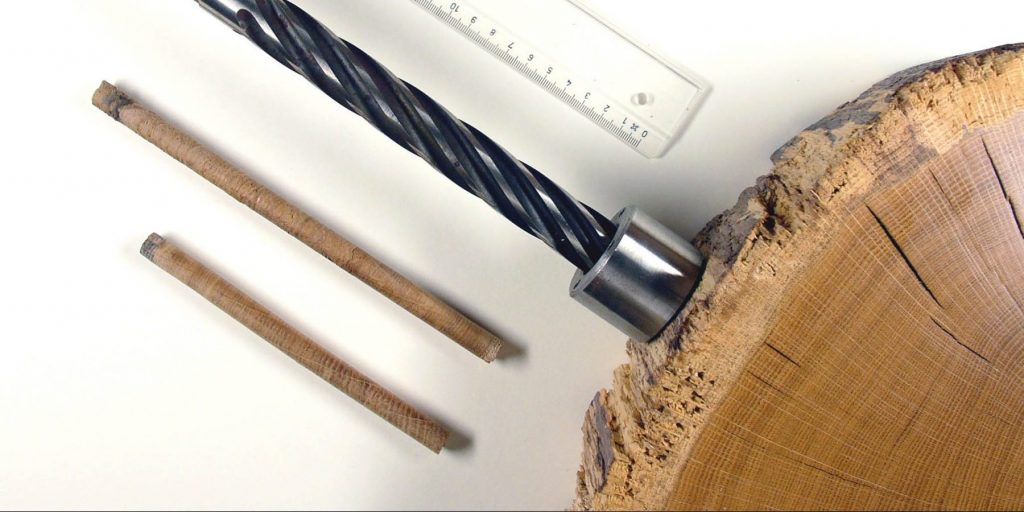
Say “solar power” and most of us think panels up on the roof. Those solar cells are expensive — about $15,000 for a home energy system that might take a decade to pay itself off. Rooftop panels, like the ones covering the fields of solar farms, are also big and heavy.
What will it take to bring the price of solar down to something an average U.S. homeowner can afford? And how can we tap into solar’s greatest asset: its free, limitless availability anywhere the sun shines? The answers aren’t far off, says UNC chemist Wei You—in just a few years, we may have powerful, low-cost solar devices that will barely add weight to our backpacks.
In his office — slightly too warm on a sunny day — Wei You pulls a solar cell about the size of a CD case out of his desk. It’s a silicon-based cell like the ones that make up rooftop solar panels: a thin square of dark-blue material streaked with metallic gray lines. It’s also fractured into several pieces. Wei You used to take the solar cell on school visits to teach kids about solar power, he says. But silicon solar cells are brittle, and this one didn’t last long.
The number-one problem with this kind of solar cell is that it’s expensive. “The price has gone down in the past 10 or so years,” Wei You explains. “Chinese manufacturers are putting lots of money into making silicon solar cells using government subsidies.” Still, silicon — purified, then sliced into thin pieces — will probably never come cheap. On average, the price of powering a home with solar panels is about twice the cost of using the electrical grid, he says.
Wei You pulls out a second cell: this one looks and feels a bit like camera film that’s been laminated. It isn’t made from a metalloid, like silicon — it’s plastic. Why? Plastic is cheap and, like silicon, it can be manipulated to convert the absorbed sunlight into electricity. The key, he says, is to figure out the right chemical configurations of polymers — long, repeating chains of molecules that make up things like plastic bags and water bottles. Polymers with certain molecular structures can gain energy from specific wavelengths of light.

Polymers are just one type of material scientists have tried substituting for silicon. Some other inorganic photovoltaic semiconductors are highly efficient at producing electricity, but the materials are even more expensive than silicon. UNC physicist Rene Lopez has experimented with many different solar-technology materials including polymers, dye-sensitized solar cells, and quantum dots, trying to find a technology than can match silicon’s efficiency. Polymers, Lopez says, aren’t the most efficient, but so far they seem like the least expensive to mass-produce.
Besides price, polymers have another advantage over silicon: they’re lighter, and they won’t fracture like the heavy, brittle silicon cell in Wei You’s desk did. A few solar products already on the market are flexible and lightweight, but they’re costly and don’t put out a lot of power. The You lab wants to build solar cells that can not only roll up like posters for easy packing, but also provide enough power for anything from a camping trip to a military operation. Since the cells are semi-transparent, they could also cover the windows of buildings, gathering energy while letting in light.
The lab also wants to make their new solar cell the first one that comes with a built-in battery. “When you have solar energy, you want to store it to use when the sun is down,” Wei You says. “One way is to inject the electricity into the power grid — that’s what solar farms do. The most effective and direct way to do that is a battery.” Such a device, he says, could provide an off-grid, round-the-clock power supply. To make this solar-cell/battery hybrid, they’re working with engineers and chemists at Duke University who design supercapacitors — high-power storage devices that, for the flexible solar cells, must be ultrathin and lightweight.
Wei You plans for the active part of the solar cell — layers of energy-capturing polymers plus the supercapacitor — to be less than 500 nanometers thick. That’s one-twentieth of one millimeter. The polymer solar cell he holds in his hand is a little bit thicker than a piece of paper — the new device, he says, will be just slightly thicker than that.
One big advantage of the new device, he says, will be that the polymers are processed in a liquid — this opens up the possibility to cheaply mass-produce solar cells by printing them onto plastic, much like printing a design on a T-shirt. Wei You’s lab is full of little tubes of liquid polymers, ranging in color from bright red to deepest blue. Each color absorbs different wavelengths of light, and the broader the spectrum of light a solar cell captures, the more electricity it can produce.
The idea sounds good enough to get the attention of Solarmer Energy, an organic-photovoltaics company that has the technology to print these types of cells. The company will collaborate with the UNC and Duke labs to make sure the new cell design can be mass-produced with Solarmer’s technology.
Wei You’s main task is to pack more efficiency into a thin, flexible cell with inexpensive materials. It’s a tall order, but it’s not so different from what his lab has already done. All solar cells lose a lot of energy in the form of heat, but the lab has helped raised the maximum efficiency of polymer solar technology from 2 percent to about 10 percent by experimenting with new polymer designs and improving the solar-cell structures.
On the market, a much lower purchase price might make up for polymers’ having lower efficiency than silicon, which has an efficiency of about 15-20 percent. But purchasing solar cells isn’t the only cost a customer incurs. “You also pay for permits, regulatory fees, insurance, electrical equipment, the guy who goes on your roof, etc.,” Lopez says. According to the Department of Energy, these nonhardware or “soft” costs are about 50 percent of the price of using solar power at home.
“Different people are working on different pieces of the problem,” Lopez says. Some scientists and engineers are investigating how to make electricity generated from solar power less costly to convert to the frequency and voltage used in homes. Other advocates for solar power are looking for ways to make the permitting and inspection process less expensive (it can cost about $2,500). Polymer or other thin, lightweight solar cells might be part of the answer: they’d be a lot easier to haul up to the roof.
Wei You is an associate professor of chemistry, and Rene Lopez is an associate professor of physics, both in the College of Arts and Sciences. You’s lab just began a $1.5 million grant from the National Science Foundation to create the thin-film solar cell and supercapacitor in partnership with Duke University and Solarmer Energy, Inc. He was also awarded a 2013 Phillip and Ruth Hettleman Prize for Artistic and Scholarly Achievement by Young Faculty. Lopez’s solar research is funded by the Department of Energy, the National Science Foundation, and the Research Corporation for Science Advancement.
[ Story by Susan Hardy, Endeavors magazine ]



